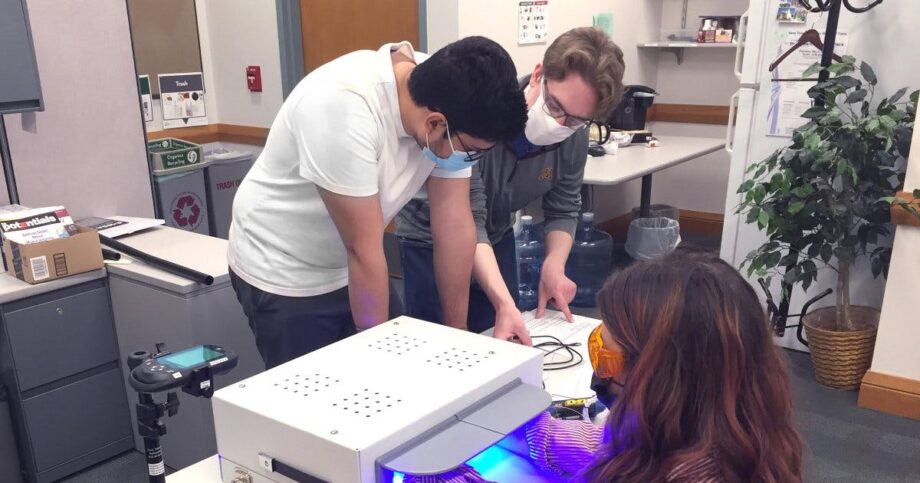- University student inventors at the University of Minnesota, led by Professor Steven Saliterman, developed a light-based treatment device for Reynaud’s phenomenon, a condition causing circulation issues in extremities.
- The student inventors faced challenges of limited funding and lab resources but persevered by scavenging for components and building prototypes.
- The device, now patented and heading for clinical trials, was tested by the student inventors on themselves due to pandemic-related research restrictions.
- The project inspired students like Brett Levac to pursue further studies in electrical engineering and others to explore new career paths in law, public health, and medical school.
- The University of Minnesota received a utility patent for the device, and the project was published in the Annals of Biomedical Engineering, bringing success and recognition to the student inventors and the university.
Transforming Salvaged Hardware into Innovative Medical Devices
In the bustling aisles of Axman Surplus, a unique collaboration between a determined professor and a group of tenacious University of Minnesota student inventors was born. Led by Professor Steven Saliterman from the Department of Biomedical Engineering, this team embarked on a challenging journey to create a groundbreaking medical device from scratch. Their mission? To address the vexing issue of Reynaud’s phenomenon, a condition that constricts blood vessels, leading to poor circulation and discomfort, especially in cold climates like Minnesota.
Challenges Faced by University Student Inventors
The year was 2017 when Saliterman and his students took on the task of developing a non-pharmaceutical treatment for Reynaud’s phenomenon. Despite the lack of formal funding and a dedicated lab, these undergraduate students were undeterred. Brett Levac, an electrical engineering major, vividly recalls the early days of the project, where they scoured Axman Surplus for salvaged components to piece together their first prototype. The process was akin to creating a high-tech “toaster oven” that could potentially revolutionize treatment for Reynaud’s.
The absence of external funding meant that the students had to be resourceful, innovative, and resilient. They meticulously crafted sensors, delved into research data, and navigated through administrative hurdles with unwavering determination. When the COVID-19 pandemic disrupted research activities, the student inventors fearlessly tested their device on themselves, echoing the spirit of pioneering scientists like Edward Jenner. Their willingness to take risks and push boundaries underscored their commitment to advancing medical technology.
Related Video

Impact and Future Aspirations of Student Inventors
The device created by these student inventors has not only earned a utility patent but is also poised for clinical trials—a testament to their ingenuity and dedication. Dr. Jerry Molitor, an advisor to the project, commended the students for their remarkable achievement, emphasizing the significance of their invention in the realm of medical innovation. The project not only culminated in a patented device but also served as a transformative experience for the student inventors, shaping their career aspirations and personal growth.
For Brett Levac, the project sparked a passion for creating novel solutions, leading him to pursue a Ph.D. in electrical engineering at the University of Texas at Austin. Emily Wagner, initially a nursing student, was drawn to the multifaceted nature of disease research, prompting her to switch her major to physiology and pursue a master’s degree in public health. James Kerber’s aptitude for navigating complex regulations and bureaucracy during the project inspired him to pursue a legal career specializing in patent law, illustrating the diverse pathways that emerged from their collaborative endeavor.
Celebrating Innovation and Collaboration
The journey of these intrepid University of Minnesota student inventors culminated in the successful development of a groundbreaking medical device, exemplifying the power of perseverance, creativity, and interdisciplinary collaboration. Their story serves as a testament to the boundless potential of student-led innovation and the transformative impact of hands-on experiential learning in academic settings. As they continue to chart new paths in their respective fields, the legacy of their pioneering work will undoubtedly inspire future generations of aspiring inventors and changemakers.
Links to additional Resources: